otodus
Junior Member Rank 1

Posts: 20
|
Post by otodus on May 10, 2020 10:04:25 GMT 5
very huge tooth picture 1 5.8ich wide teeth 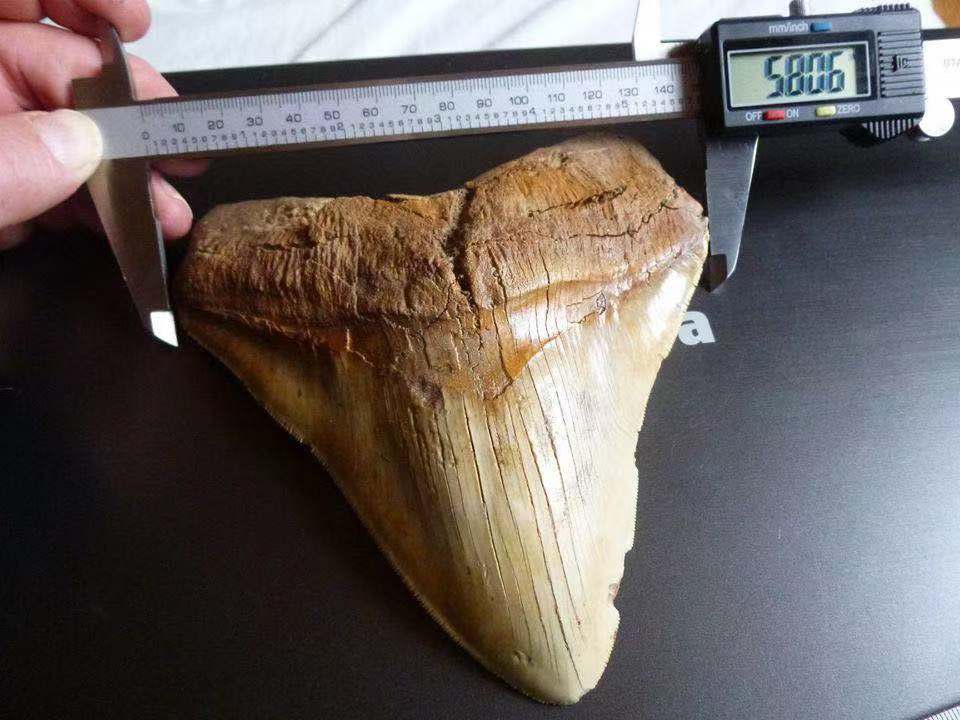 147mm wide tooth  4inch wide Posterior teeth 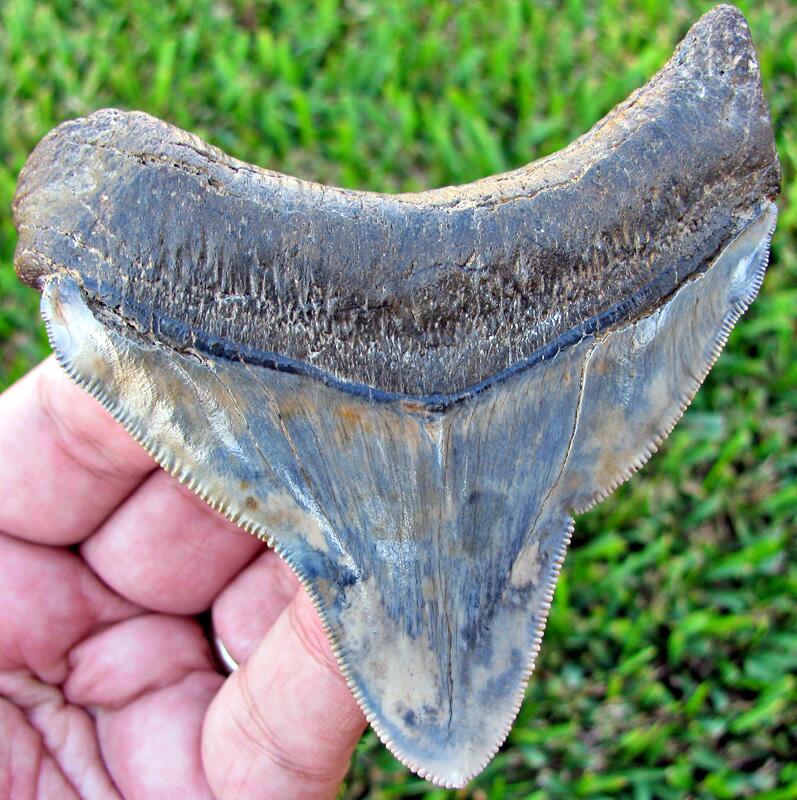 4.8inch broken tooth 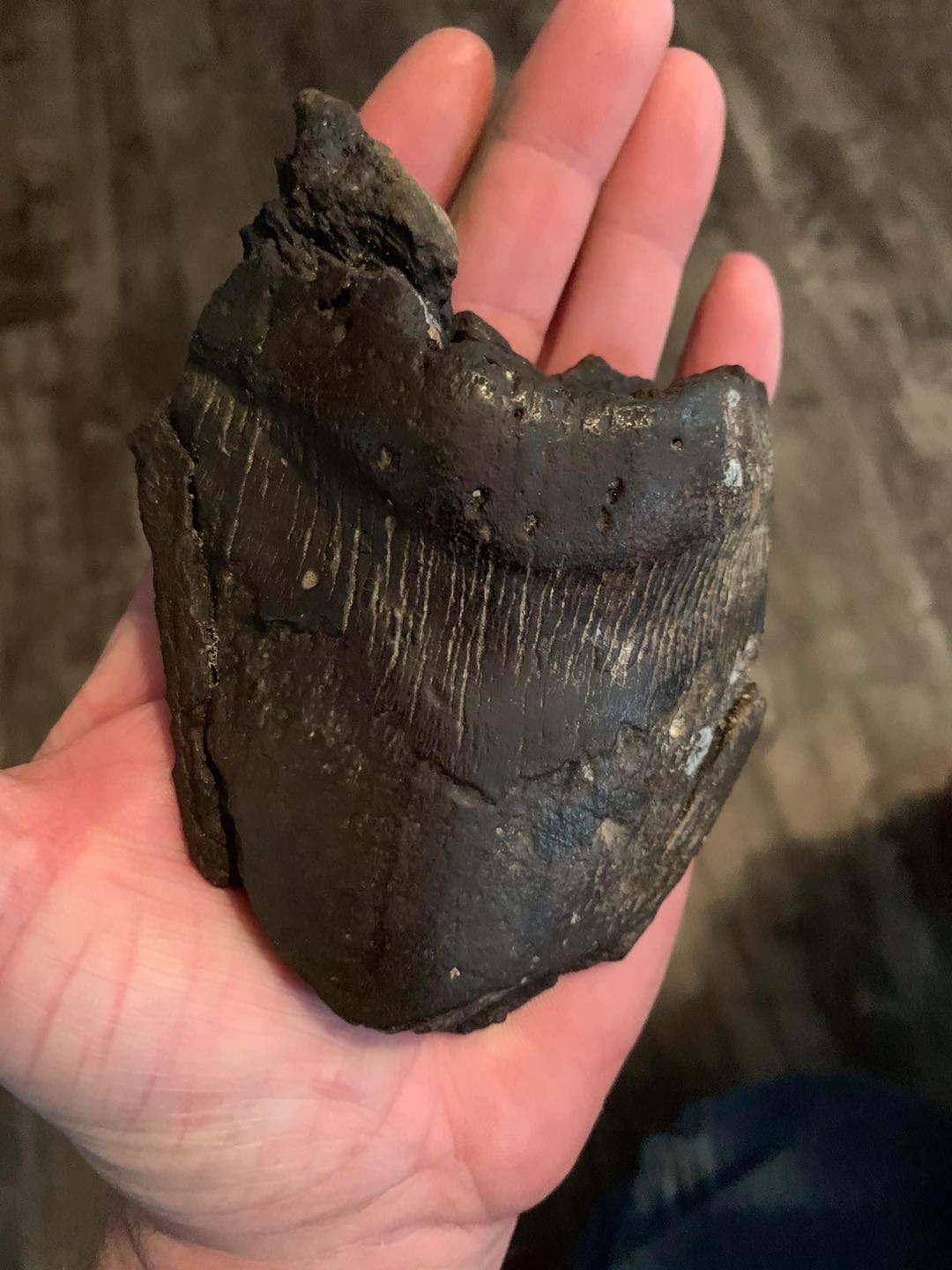 Western Sahara 7.49inch megalodon 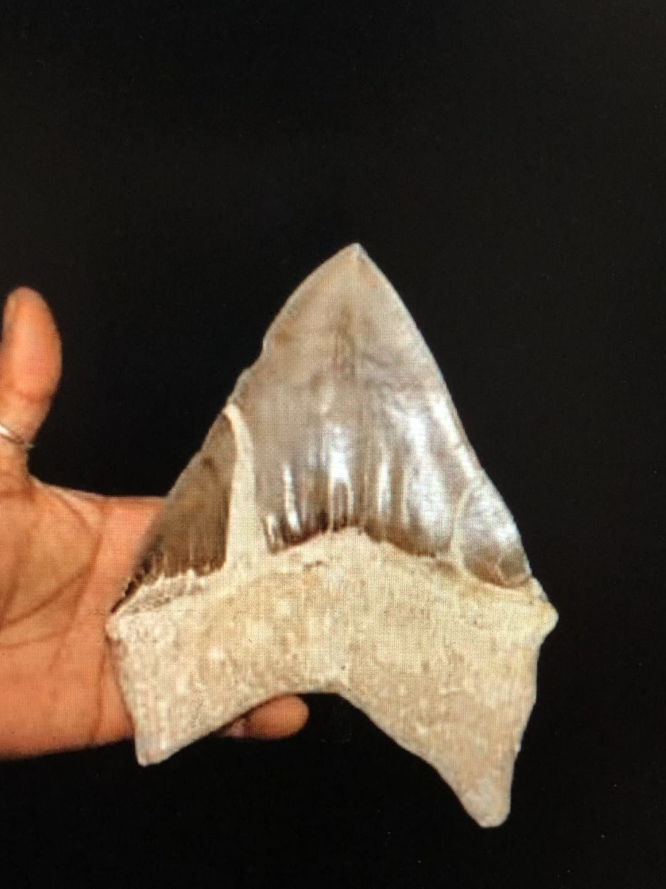 chile megalodon very huge  chile megalodon Break teeth 171mm wide 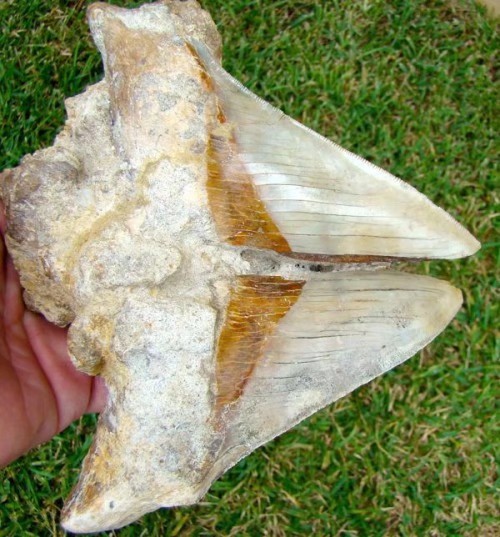 |
|
|
|
Post by Grey on Sept 3, 2020 21:42:24 GMT 5
|
|
|
|
Post by elosha11 on Sept 10, 2020 19:43:16 GMT 5
^This new study shows a 16 meter specimen's size, but acknowledges a max shark could max out at around 18m. There is no prediction of the weight of any such animal in the study, but a cnn.com article still quotes the researchers as saying an 18 meter specimen would be around 48 tons. Given the robustness of picture of the calculated 16m specimen, I find it somewhat likely that an 18 m specimen would be substantially heavier, and that 48 tons is a bit of an underestimate. I wonder if any of you more mathematically inclined and those with good software could potentially scale-up the paper's proposed 16 meter model to an 18 M specimen? 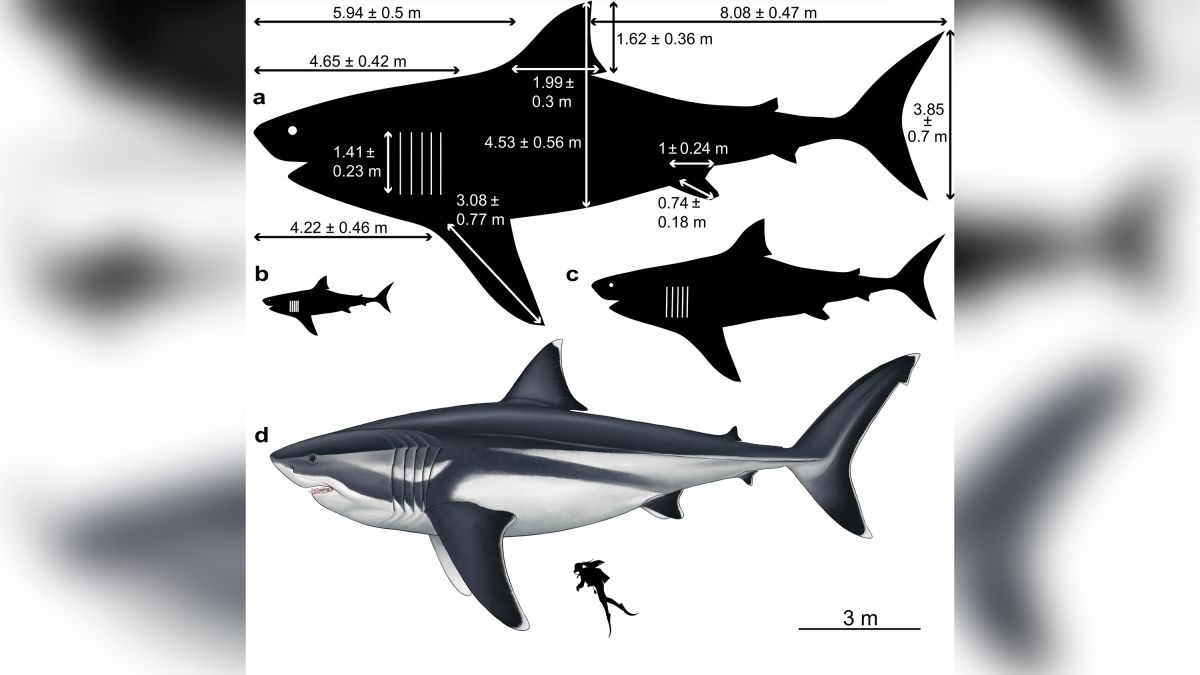 theropod theropod @infinity Blade Grey@life |
|
|
|
Post by Infinity Blade on Sept 10, 2020 20:20:27 GMT 5
Just so you know, my actual username is dinopithecus, so you'd put the @ in front of dinopithecus. Infinity Blade is just my display name. It's the same for Life; his actual username is admin. The only thing I have to go by is theropod's size chart-> he made a while back. According to it, a 13.6 meter C. megalodon would weigh ~27 tonnes, so scaling that up to 16 meters already gives you ~44 tonnes. Scaling up from that same base up to 18 meters (if the researchers really did say that it could grow up to 18 meters long), that would give you a ~62.6 tonne shark. His chart also puts a 15.6 meter individual at ~41 tonnes, and scaling from that instead gives you results consistent with the ones I gave. |
|
|
|
Post by elosha11 on Sept 10, 2020 20:33:34 GMT 5
From 2020 study:
|
|
|
|
Post by elosha11 on Sept 11, 2020 1:22:11 GMT 5
theropod. I'd be interested to hear your thoughts on the 2020 study compared to yours. You estimated the Yorktown specimen at 16.8 M to weigh approximately 56,800 kg. how do you think your model compares to the 2020 study? I think they are somewhat similar although it does look like their model is a bit more bulky than yours, even comparing their 16 specimen to your 16.8 meter one. www.deviantart.com/theropod1/journal/How-bulky-was-Megalodon-795970644 
|
|
|
|
Post by elosha11 on Sept 11, 2020 2:03:04 GMT 5
theropod, one reason your model may be different from theirs is b/c they used five different related lamnid species rather than only the great white shark as you did in your model, and which has also been done in previous studies. The 2020 study used the great white shark, the shortfin mako, the longfin mako, the salmon shark, and the porbeagle. Apparently, using these lamnids produced very accurate predictions and a more robust Megalodon than using only the great white shark as an analog. www.nature.com/articles/s41598-020-71387-y
|
|
|
|
Post by theropod on Sept 16, 2020 1:58:15 GMT 5
theropod , one reason your model may be different from theirs is b/c they used five different related lamnid species rather than only the great white shark as you did in your model, and which has also been done in previous studies. The 2020 study used the great white shark, the shortfin mako, the longfin mako, the salmon shark, and the porbeagle. Yes, that is likely the main reason. The rest of the methodology here is also not the same. My calculation was based on the mass estimate (slightly allometric), and translating that into the appropriate increase in robusticity for the model to have the appropriate volume. Since I specifically used a 3D model to be sure of the volume I can be pretty confident in saying the megalodon with the morphology shown really does correspond to the mass estimate, since it was specifically scaled to do that. So if a 16.8m megalodon was 51-ish tons, then that’s how bulky it would have to be overall. That being said the difference between the body depth in my reconstruction and theirs is not major. According to their Table 1, they estimate a body depth (DPA) of 280.41± 40.26 cm at 16m, my models are around 280-300m at 16.8m. However I just checked their dataset (S3) and they give a regression of y = 0.1588x + 2.2566 for DPA based on all species, and an estimate of 256 cm. The same regression would give 269 cm at 16.8 m, so actually below my estimates. No idea why that is. Moreover taking their raw dataset (n=54) and running a linear regression on it gives me yet another different figure. However they apparently only used 41 datapoints, and the 54 in their table are just the raw image measurement, but I remain in the dark as to which of their measurements they are. I’m not totally sure what’s going on there, will need read the study more carefully. I wouldn’t expect their figures to turn out exactly the same as my models based on such different methods. How wide the body is is another open question; my estimates were under the assumption that the body grew equally in depth and width, that may or may not be correct. If one of them grew less, in order to stay at the same mass the other would grow more. Either way it was just to show how bulky a shark of a given weight would have to be, which it still does. Made specifically to fit the mass estimate, which has a quantitative basis. "Accurate" isn’t the correct term, as that would imply something to test it against (which doesn’t exist, since it would negate the need for such extrapolation alltogether). Statistically significant is what you mean, as they write. Of course it makes sense, however it does not anwer the question of which (if any) of these sharks megalodon really looked most similar to, or whether it was really a "mashup" of different lamnids in terms of its morphology. But in the absence of specific data saying otherwise, the latter is certainly a reasonable hypothesis. That one would get the most significant correlation using a model including all species is of course to be expected (unless they are extremely disparate), as simply a larger sample size will tend to have that effect. However note that their regressions base on a much smaller sample than the length-weight regressions my bulk reconstruction used, 41 individuals vs over a thousand. |
|
otodus
Junior Member Rank 1

Posts: 20
|
Post by otodus on Sept 23, 2020 10:58:17 GMT 5
|
|
otodus
Junior Member Rank 1

Posts: 20
|
Post by otodus on Sept 23, 2020 10:58:51 GMT 5
|
|
|
|
Post by Grey on Mar 10, 2021 21:59:52 GMT 5
|
|
|
|
Post by elosha11 on Mar 10, 2021 22:05:17 GMT 5
Congratulations to Grey and all the other authors! I'll be reviewing tonight after work and providing my comments. |
|
|
|
Post by Life on Mar 10, 2021 22:42:31 GMT 5
Congratulations to Grey and all the other authors! I'll be reviewing tonight after work and providing my comments. Second that. Grey is now in the news ticker of this Forum; a celebrity.  |
|
|
|
Post by Infinity Blade on Mar 10, 2021 22:44:26 GMT 5
Yeah, I got work to do, but I'll take a closer look at it once I'm through.
Congratulations Grey.
|
|
|
|
Post by elosha11 on Mar 11, 2021 7:28:05 GMT 5
|
|